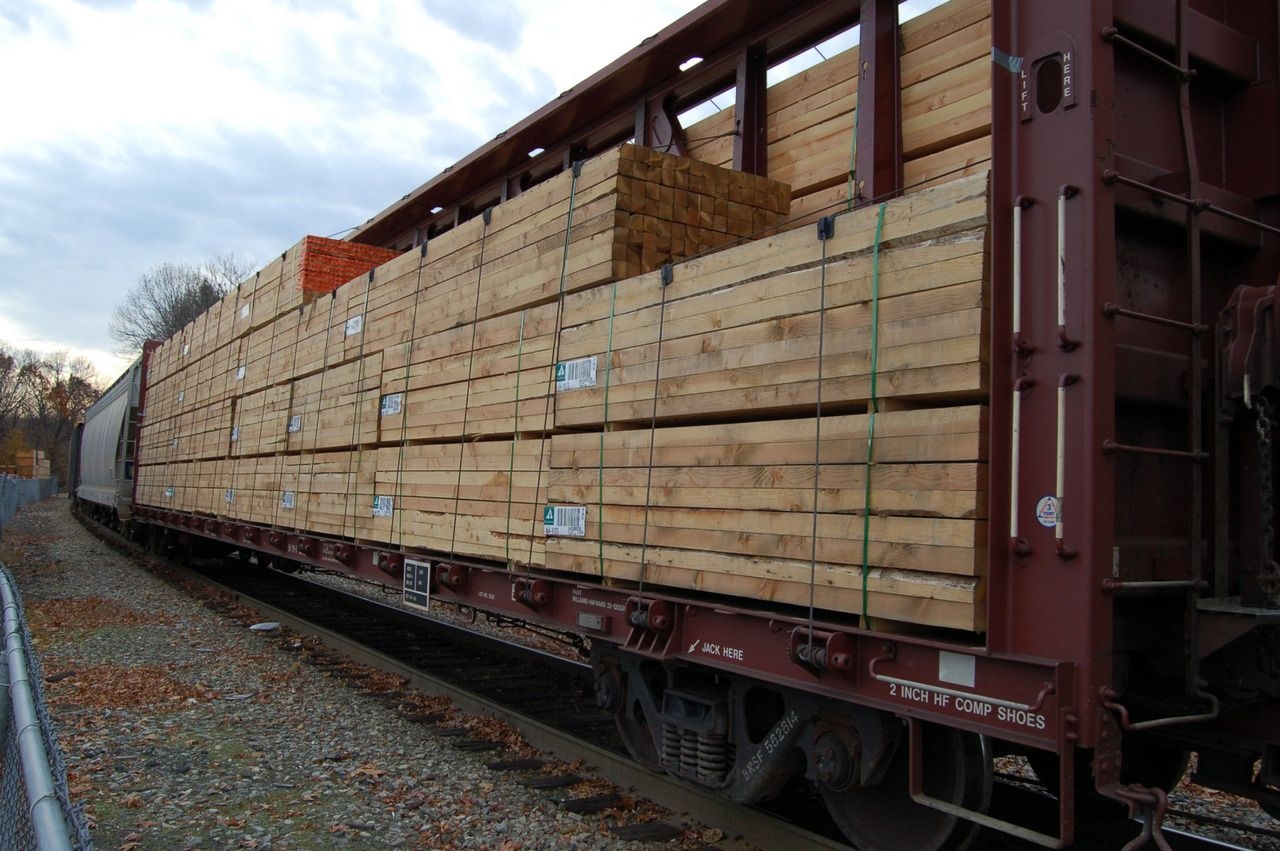My first major corporate assignment...
 ...focused on the location of a lumber reload distribution center. The premise was simple. Rail cars of lumber come in to the facility, are off loaded, and lumber is placed into storage in the facility or directly loaded onto trucks that deliver the lumber to the stores.
...focused on the location of a lumber reload distribution center. The premise was simple. Rail cars of lumber come in to the facility, are off loaded, and lumber is placed into storage in the facility or directly loaded onto trucks that deliver the lumber to the stores.
The task was not so simple. The only information that my boss gave me to work with was the list of stores the facility would support, and a list of potential products to flow through the operation. My task was to determine the best place to put the facility. I had four weeks to do it.
I got to use a new location analysis tool called OptiSite. Based on the volumes of the shipments, the freight costs, the operations costs, and some other cost factors, the software would crunch the numbers and report an area that makes the most sense to locate the facility. Nobody else in the company had figured out how to use the software, so I was on my own figuring it out.
I did not have much other guidance on how to report the findings. I knew that I would be presenting it to a group of officers, but where and how was undetermined. My boss said that he would help me plan the work, but all of the data collection, analysis, and the creation of the report of results was my problem to solve.
In the next four weeks I learned about how rail interchange agreements work, the cost of getting cars switched in and out of rail sidings, how much lumber fits onto the different rail cars, where OSB and plywood mills are, and the challenges of extracting sales volume data from the mainframe computer system. I got to work with a new Compaq 386 PC computer (the fastest PC in the company) and software that no one else in the company knew how to use.
At the end of the four weeks, I presented the results of my analysis to the company steering committee – the top 12 officers in the corporation. My presentation was on a single sheet of 11 x 15 green bar paper, a summary of each part of the analysis presented in a mosaic with the recommended result in the middle of the page. The meeting lasted less than 30 minutes with the approval to move forward following the recommended location.
That was my first Supply Chain Analysis project. I have done thousands since. Some projects were very complex, some simple. Some required a team of people to complete while others were simple, one-person projects. Some needed complex spreadsheets and a terabyte of data; others took only a sheet of paper and no real data other than what we could observe.
Analysis is a core requirement of Logistics and Supply Chain Management. Every supply chain manager should have performed several hundred analysis projects, large and small, to really understand what is happening in the network, in the warehouse, in the yard, or inside the truck. If you can’t analyze it, you can’t make the system work better.
The articles in this topic focus on lessons learned in our analysis backgrounds. Some are instructional; others are stories about how the work happened. All should help you think about how you can improve your analysis abilities.
Articles in This Series
Articles in This Series
Supply Chain Defined
A supply chain is a network that exists between different companies for the purpose of producing and moving a specific product or service. Read More

What is a Supply Chain
How do you define a supply chain? This question came up last week as a colleague read a short biography about me. The reader challenged a claim in the bio as an exaggeration. I resisted the attack by agreeing with him that the statement was an exaggeration of an understatement. Read More

What Is the Goal of the Suppy Chain? Part 1 – Establishing the Goal
"Gentlemen, the officer who doesn’t know his communications and supply, as well as his tactics, is totally useless.” – Gen. George S. Patton Read More

The Impact of Complex Supply Chains
Political candidates across the country, especially in the industrial heartland, tend to make China an economic bogeyman ..... Read More

What is the Goal of the Supply Chain? Part 2 – Fortifying the Goal
What is the goal of the supply chain? Based on part one of our discussion, we should agree that the classical goal and definition are insufficient to serve the prime directive of an enterprise, to make more money now and in the future. Read More

Your Supply Chain Is Really Many Supply Chains Best-in-Class Understand Them All
Very few companies have a single supply chain. Power plants, concrete plants, oil refineries, and fertilizer operations are among the few that do. Read More

What is the Goal of the Supply Chain? Part 3 – Testing for Sufficiency
“The goal of supply chain management is to improve organizational knowledge and effectiveness to increase the operating cash generated, now and in the future.” Read More

Thanksgiving Traditions They Call It Turkey Day Back Where I'm From
November is a special time of year—food, friends, family, and festivities. That time of year is riddled with tradition. Read More


